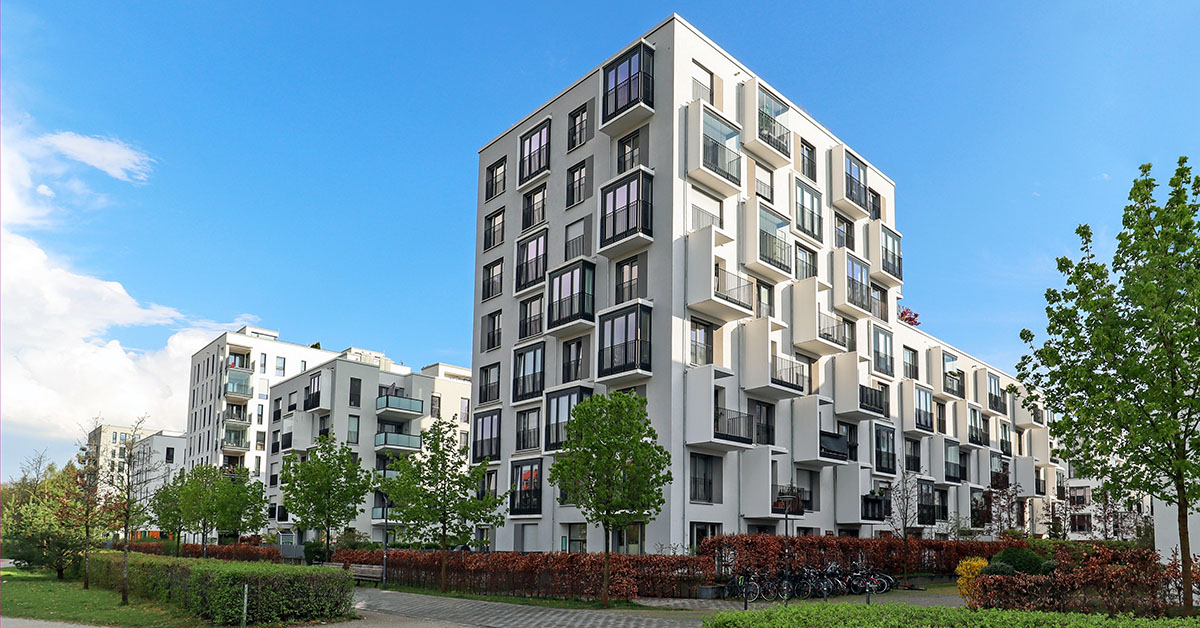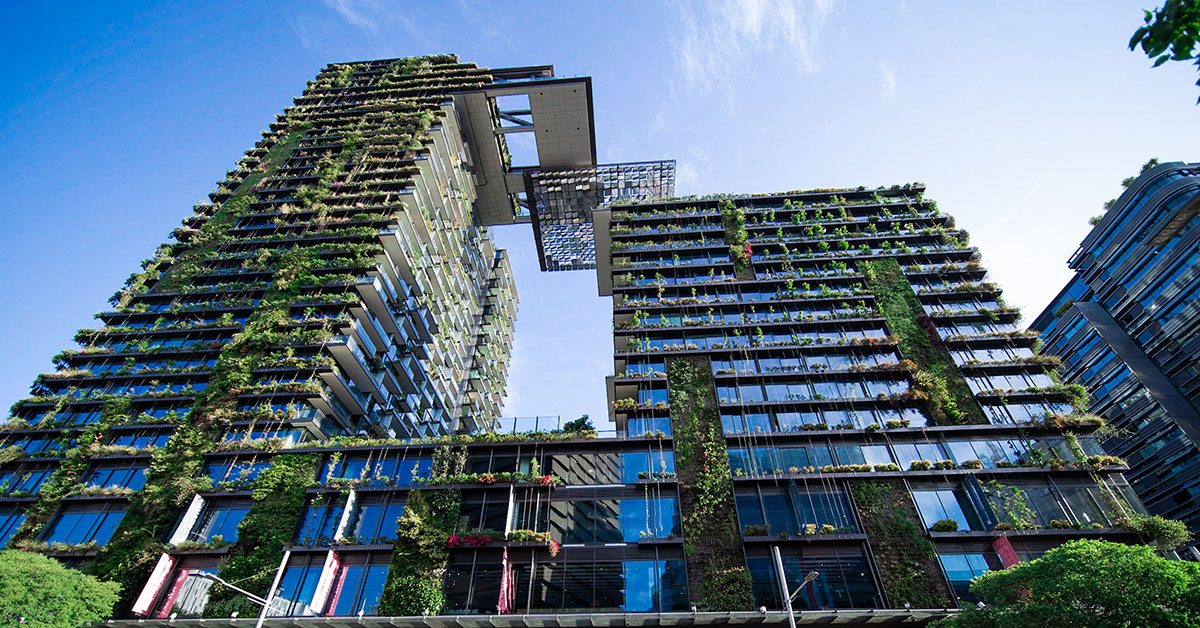Balancing Housing Affordability and Sustainability – Who Pays for a Just Transition?
The bill for a more energy efficient housing market is, however, considerable. A new study from MIT investigating the impact of new energy-efficient building code adoption in the state of Massachusetts, suggests that these codes can induce a nearly 12% reduction in new single family home construction. It raises issues for policymakers about how to achieve the transition without it being potentially unaffordable for many citizens. Dongxiao Niu, Post-doc Researcher at the School of Business and Economics, Maastricht University, shares the conclusions of this study and discusses the crucial roles of policymakers.
Green Building on a Budget
Green building is an essential response to the climate crisis which involves considerable implication costs for property owners and for tenants. The conversion and construction of energy-efficient buildings play a pivotal role in reducing carbon emissions and tackling climate change. In some European countries, governments have already introduced policies that will facilitate a faster transition period than mandated by the European Union. The bill for a more energy efficient housing market is considerable. It raises issues for policymakers about how to achieve the transition without it being potentially unaffordable for many citizens.
More about this in the article: Rising energy efficiency standards: A worldwide phenomenon
The Impact of Energy-Efficient Building Codes on Housing
Energy-efficient building codes are reshaping the housing market, with implications for pricing and production. Research reveals a discernible price premium associated with energy-efficient commercial buildings and residential homes. These price premiums are largely attributed to enhanced features and benefits such as reduced utility bills and a smaller carbon footprint. However, this raises questions regarding the accessibility and affordability of such housing options for the average consumer. Are these green structures within the financial reach of the average consumer, given higher upfront costs and elevated rental rates?
Cities adopting green building have witnessed volatility in house prices
Comparative research between green and conventional homes illustrates the trade-offs consumers face. A new study from MIT investigating the impact of new energy-efficient building code adoption in the state of Massachusetts, suggests that these codes can induce a nearly 12% reduction in new single family home construction. This decline is possibly due to the combination of extra costs of constructing more energy-efficient buildings and the uncertain market response to the new building style – it’s possible that buyers are not willing to pay or even not financially capable to pay for the more energy-efficient homes. Consequently, fewer new homes are built, leading to an increase in the price of conventional, older, less energy-efficient homes. Cities adopting green building practices have witnessed volatility in house prices, prompting discussions about finding a balance to between environmental responsibility and building enough homes.
Balancing Affordability and Sustainability
Finding a balance between affordability and sustainability is important in fostering a more inclusive real estate market. Policymakers and the public express support for measures that curb carbon emissions in the real estate sector. However, the consensus can break down when policies affect individual’s own homes. In Germany, politicians are voicing their concerns against mandatory heat pump installations. There are considerable upfront costs involved in clean-energy retrofitting. For example, a heat pump can cost approximately €20,000 more than a conventional gas boiler. In France, the move to phase out gas boilers has also been anything but smooth. For many in cities like Paris, gas boilers are not just a heating solution, but a tradition. Thus, their potential removal is met with resistance both from a nostalgic and practical standpoint, as well as cost. Clearly, the debate isn’t only about preferences. Energy efficiency mandates that require considerable initial expense could become unaffordable and undermined if they are not accompanied by financial support.
Urgent policy concerns around financing energy transition
There are a range of urgent policy concerns emerging around the financing of the energy transition. Who shoulders the burden of complying with new energy-efficient building codes? How should the retrofitting of existing homes be funded and by whom? Can tenants in cities like Amsterdam, spending 40% of their salary on housing costs, be expected to pay an additional premium for a green transition? Similar issues arise in the commercial real estate market. While some landlords can pass on the costs of lowering their energy intensity to their tenants, others, owning lower quality buildings or in less attractive locations and markets, will have less flexibility. Interestingly, certain institutional investors have welcomed stricter environmental regulations. More stringent rules erect new “barriers to entry” and could potentially discourage new market entrants, reducing competition. This is especially advantageous for established, well-capitalized managers. They perceive these “barriers” as opportunities to secure their market position. Conversely, there’s a belief amongst smaller scale investors that new measures will disadvantage them, and favor the large, resource-rich property owners. It’s further claimed that additional regulation not only restricts smaller investors’ participation in the property market but is detrimental to its longer-term health.
Effect of policy uncertainty on long term planning
One of the major concerns of the professional property industry is the effect of policy uncertainty on long term planning. Policy inconsistency makes long-term planning a difficult task for property owners. Devising a 10-year blueprint for a property portfolio is challenging when investors discover the regulatory goals shift midway through the investment period.
Conclusion: navigating a complex mix of ambitions, realities and challenges
The path to greener buildings involves navigating a complex mix of environmental ambitions, economic realities, and regulatory challenges. Although the upfront costs of green buildings are considerable, the long term economic and environmental benefits are substantial. Moreover, if undertaken on a larger scale, greater cost efficiencies and shortened payback periods can be achieved. During these considerations, our aspiration remains a balanced resolution that is both ecologically sustainable and economically viable.
Energy-efficient building codes are undoubtedly required to move the industry towards more environmentally-friendly practices. Over time, the property industry will develop more cost-effective construction methods. Similarly, the finance sector can create attractive products to help consumers explore financing options for greener buildings. However, the impact of green building codes on affordability and availability will require a significant, harmonized approach from policymakers that considers policy effects, technology, and market impacts. Policies will need to balance affordability and sustainability ambitions to ensure a future where access to greener properties is available to everyone.
Call upon other investors to collaborate to achieve real-world impact
GREEN is a not-for-profit collaborative engagement initiative for institutional investors, focusing on reducing climate risk in the real estate industry. GREEN members acknowledge the importance of collaboration to initiate change and maximize impact. We, therefore, call upon other institutional investors to join GREEN and work together towards a Paris-aligned real estate sector. Check the investor statement for more information.
Disclaimer
The views presented in this article reflect the views of the GREEN Secretariat but do not necessarily represent those of the individual GREEN members.
.






